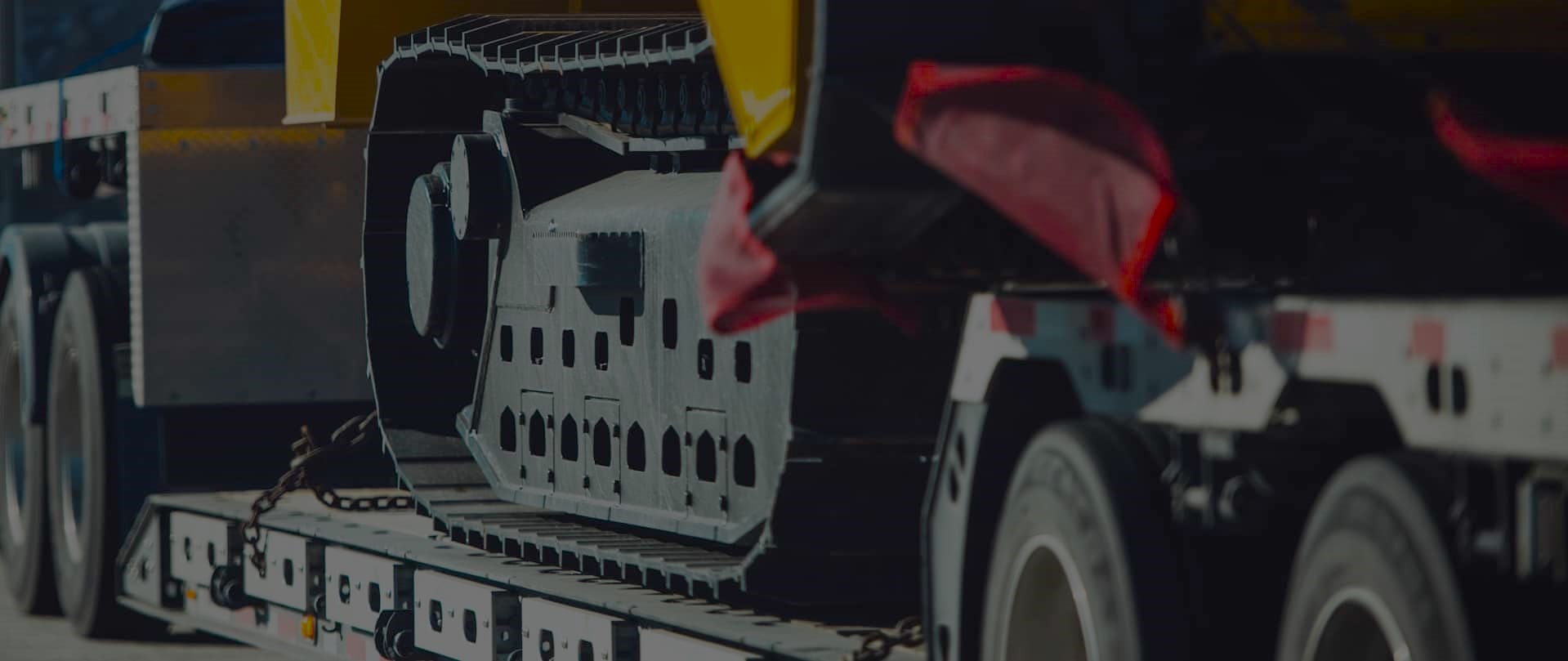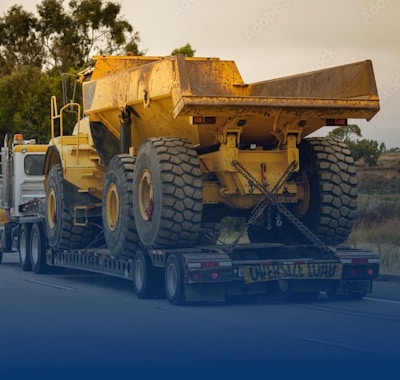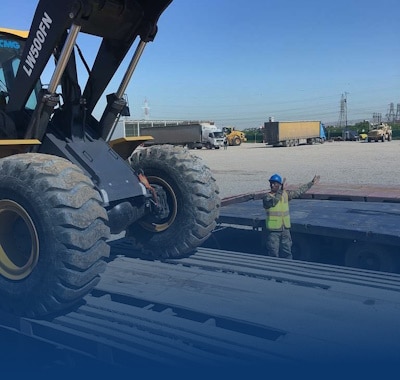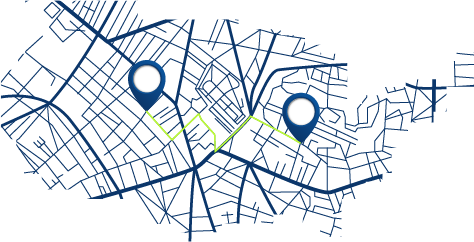Navigating Oversize Deliveries in Texas During Peak Oil Drilling
Freedom Heavy Haul can offer expedited Pickup and Delivery for any size shipment anywhere in the USA. Contact us today for No Hassle, No Pressure Pricing.
Managing oversize deliveries in Texas during peak oil drilling takes more than trucks and permits. Texas’ long oil legacy—from Spindletop to the Permian Basin—shapes modern logistics and the rules set by the Railroad Commission of Texas. We turn complex industry rules into simple, on-the-ground plans.
We align permitting, escorts, route surveys, and staging so teams focus on production while we handle route limits, local ordinances, and community concern. Our approach ties directly to your drilling and completion schedules to cut downtime and move critical equipment on time.
Risk control matters when every hour counts. We use contingency routing, weather monitoring, and night moves to protect timelines. With real-time visibility and fast exception management, decision-makers gain clear information to act quickly. The result: safe, compliant moves that keep texas oil and gas operations productive.
Why peak drilling in Texas challenges oversize logistics
When production surges, logistics must stretch to cover wide geography, short timelines, and limited local capacity. The Permian spans roughly 86,000 square miles and ships millions of barrels per day, so moves reach remote well pads on tight windows.
Pipelines help, but capacity gaps shift volume to roads. About two-thirds of crude oil moves by pipeline nationally, leaving roughly one-third to trucks. That gap forces more tanks, modular units, and heavy equipment onto rural corridors when oil production accelerates.
Permian Basin scale
Long distances and high per day throughput mean more staging points and more coordination across the region. Planners link carrier capacity with rig and frac schedules to meet daily targets.
Pipelines vs. trucks
Narrow county routes, low utility lines, and older bridges create clashes with large loads. Precise route surveys and escorts are non-negotiable to protect infrastructure and schedules.
On-site realities
Wells produce waste streams—drilling mud, cuttings, sludge, and produced water—that eat space at pads. Soft pads, active rigs, and water handling slow access and require coordinated laydown.
Operators must balance throughput with safe staging to avoid delays and local congestion.
- Traffic from tanks, mud haulers, and water trucks spikes congestion.
- Weather and flash floods can close low-water crossings fast.
- Permitting and escort shortages demand early submission and statewide coordination.
| Challenge | Impact | Typical Data Point | Mitigation |
|---|---|---|---|
| Scale | More remote moves | 86,000 sq mi | Distributed staging yards |
| Pipeline gaps | Road freight surge | ~1/3 by truck | Carrier capacity alignment |
| Site constraints | Slow access | Produced water ~3.9B barrels/yr | Coordinated laydown & permits |
| Infrastructure limits | Route restrictions | Low bridges, narrow roads | Detailed surveys & escorts |
Managing oversize deliveries in Texas during peak oil drilling
We synchronize escort windows, county permits and route checks to remove surprises and speed transit. Our turnkey permitting service sequences permits, escorts, and utility notifications to match your project timeline and cut wait time at checkpoints.
Turnkey heavy‑haul permitting, escorts and route surveys across the state
Route surveys focus on low bridges, overhead lines, narrow culverts, sharp turns, and posted weight limits measured in feet and tons. We log clearances and identify required escorts or temporary utility moves before a truck rolls.
Bridges, clearances and weight limits: feet, land, and infrastructure considerations
Equipment planning accounts for multi-axle trailers, steerable dollies, and pole cars to handle extreme lengths and heights. Pre-trip dry runs and contingency maps account for seasonal roads and county maintenance schedules.
Night moves, staging and laydown to minimize wellsite downtime
Night moves reduce local traffic impact and speed transits through towns. We stage assets at strategic yards to compress days from order to delivery and align arrivals with rig release, frac mobilization, or facility tie-ins.
Clear communication with companies and facilities keeps gates, security and local communities informed during night transits.
| Service | Focus | Benefit | Typical Data |
|---|---|---|---|
| Permitting & Escorts | Sequence & notifications | Reduce checkpoint delays | County-by-county rules |
| Route Surveys | Bridges, clearances, turns | Protect infrastructure | Feet & tons recorded |
| Staging & Laydown | Depot placement, crane timing | Minimize site downtime | Days compressed to meet arrival |
| Pre-trip Runs | Contingency mapping | Avoid sudden closures | Seasonal road checks |
Texas rules and what they mean for your move
The Railroad Commission’s draft to replace Statewide Rule 8 takes effect July 1, 2025. It changes how reserve pits, produced water, and drilling mud are handled. For the first time, operators must register pit locations and follow tiered standards that scale with waste volume, time in ground, and groundwater proximity.
What this means on the ground:
- Reserve pits need liners when groundwater sits within 50 feet of the bottom and are barred from 100‑year floodplains.
- Commercial facilities face stricter liner, monitoring, and setback rules that affect where you stage or transfer tanks.
- Site access and pads near wells require updated compliance checks and local notifications before assets arrive.
Registering pit locations and new commercial standards will change staging options and transfer windows for many operators.
We track RRC updates, public hearings, and final language so crews carry the right paperwork and site plans. Below is a quick comparison of rule impacts for planning.
| Rule Element | Key Threshold | Site Impact | Action for Moves |
|---|---|---|---|
| Reserve pit liners | Groundwater ≤ 50 feet | Higher containment needs near shallow aquifers | Pre-check water maps; avoid laydown over shallow zones |
| Floodplain ban | 100‑year floodplain | No pits allowed; staging limited | Select alternate yards; plan route detours |
| Registration | All reserve pits | Public record of pit locations | File early; reconcile staging plans with registry |
| Commercial sites | Stricter liners/monitoring | Fewer compliant transfer points | Reserve certified facilities; adjust SLAs |
Safety, compliance and environmental stewardship built into every haul
We design each route and load to protect groundwater, communities, and crews. That starts with engineering controls that match current rules for pit liners, monitoring, and closure practices.
Securement and load planning prevent slosh and roadway spills. We use sealed tanks, correct headspace, and reviewed speed profiles for trucks carrying water, mud, or drilling mud. Pre-trip checks and tiedowns reduce movement on long hauls.
Aligning with evolving groundwater protections and pit liner standards
We coordinate with operators on liner status and containment readiness. Staging distances avoid sensitive wells and shallow aquifers. All moves include documented approvals and chain-of-custody manifests for audit readiness.
Operating near communities and facilities with odor and emissions awareness
Crews follow site-specific rules at facilities and public sites. Night moves use noise-minimizing procedures and odor monitoring to lessen community impact.
Oilfield waste traffic: preventing slosh, spills and roadway contamination
Pad-entry protocols reduce track-out and cross-contamination with drip pans, absorbents, and swift cleanup of any release. Our incident process uses pre-trip inspections, spill kits, bermed temporary storage, and rapid reporting to on-site supervisors.
We keep audit-ready records — manifests, route logs, and incident reports — to show compliance and protect your reputation in the oilfield world.
End‑to‑end solutions for oil and gas moves during a boom
A single operations plan links yards, carriers and site crews so critical assets arrive when teams are ready. We build schedules that match production windows and crane availability, reducing waiting time at the gate.
Heavy equipment transport: rigs, modular units, tanks and oilfield trucks
We move rig sections, modular buildings, tanks and specialty trucks with right‑sized trailers and licensed escorts.
Tanker support uses sealed containment and pre‑approved routes. Typical tanker capacities range from 400 to 8,400 gallons to cover short hops and longer refuels.
Base‑to‑base logistics: yards, depots and intermodal handoffs
Base hops compress transfer time. Intermodal handoffs keep long hauls efficient while last‑mile teams handle precise placement at facilities.
Time‑critical supply runs for wells, mud, water and facility turnarounds
We guarantee windows for mud, produced water, and critical parts. Surge capacity lets us add drivers, trucks and escorts across high‑demand periods.
Visibility from origin to wellhead: real‑time tracking and exception management
Real‑time tracking and automated alerts let dispatch and site leads adapt when routes change. Exception workflows speed decisions and limit downtime.
Rapid capacity ramp‑up across peak days and surge periods
We match drivers, trailers and escort teams to your sequence of loads. KPIs on on‑time performance, dwell and variance help refine plans through each high‑demand period.
“With pipelines carrying roughly two‑thirds of supply, road transport remains the critical link for short hauls, rig moves and turnarounds.”
| Service | Focus | Benefit |
|---|---|---|
| Integrated transport plan | Rigs, modules, tanks | Predictable arrival; fewer handoffs |
| Yard & intermodal hops | Depots, transfers | Faster last‑mile delivery |
| Time‑critical runs | Mud, water, parts | Guaranteed windows; surge ready |
| Visibility & exceptions | Real‑time tracking | Faster recovery from delays |
Timelines, SLAs and continuity when barrels per day are on the line
Clear timelines and swift contingency plans keep production moving when every barrel counts. We define SLAs that link delivery windows to production needs and add buffer time for weather or sudden closures.
That buffer protects day rate efficiency and prevents stranded crews. SLAs set acceptance windows, escalation steps, and documented approvals so everyone knows who acts and when.
Route contingency planning for weather, floods and road closures
Pre-clearing multiple corridors with escort and utility partners lets teams pivot without losing compliance or safety margins measured in feet and tons.
- Maintain rolling contact with state and county officials to capture closure notices early.
- Use live telemetry and weather intelligence to re-sequence loads and protect production schedules.
- Coordinate trucks, cranes, and crews so rescheduled arrivals preserve resources and keep days productive.
Documented change management and quick approvals are the backbone of SLA integrity and audit-ready records.
| Focus | What we do | Benefit |
|---|---|---|
| SLA design | Delivery windows + contingency | Predictable timeframes; fewer idle days |
| Route pre-clear | Alternate corridors, escorts | Rapid pivoting; maintained safety margins |
| Real-time tools | Telemetry & weather feeds | Adaptive sequencing; reduced delays |
| Post-event review | After-action reports | Continuous improvement for next period |
Ready to keep Texas energy moving—talk to our oil and gas logistics team
When barrels per day targets matter, you need a partner who turns complex routing and permits into reliable results. Tap a responsive team that knows texas oil surges, aligns carriers and companies, and scales capacity across the Permian and wider region.
We provide end-to-end planning for heavy gear, sealed liquids, wells handoffs, mud and water support, and facility moves. Count on clear pricing, SLA-backed performance, and KPIs that make the process predictable during any boom or tight period.
Talk to our team today to secure compliant moves that protect production and keep crude oil and fuel flows steady. Get a quote, map routes in feet, and let proven companies handle permits the first time.







